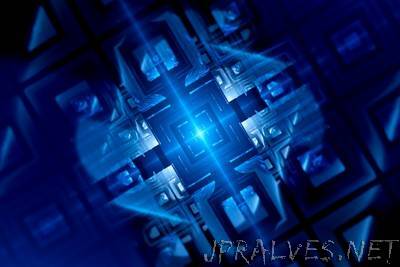In an era where conventional computing paradigms are reaching their limits, the promise of quantum computing ignites the imagination and fosters anticipatory excitement within both the scientific community and the general populace. Yet, as we delve into the complexities of quantum technology, a pressing inquiry emerges: how close are we to realizing mass production of quantum computers?
To address this question, it is imperative to initially define what quantum computing entails. Unlike classical computers, which utilize bits as the basic unit of information, quantum computers manipulate quantum bits, or qubits. These qubits can exist in multiple states simultaneously, thanks to phenomena such as superposition and entanglement. This inherent capability allows quantum computers to tackle problems deemed intractable by their classical counterparts, promising exponential growth in computational ability.
Despite the phenomenal potential, the journey toward mass-producible quantum computing is fraught with obstacles. These challenges are both technical and conceptual, requiring a paradigm shift in our understanding of computation and materials science. The complexities inherent in maintaining qubit coherence and managing error rates underpin the difficulties faced by researchers and engineers alike.
One of the foremost challenges is qubit coherence time—the duration for which a qubit can maintain its quantum state. Current quantum systems, be they superconducting qubits or trapped ions, exhibit relatively short coherence times, often on the order of mere milliseconds. This limitation drastically hampers their ability to perform extensive calculations, as prolonged computations necessitate qubits that can preserve their states for longer durations.
Another technical hurdle is the issue of error correction. Quantum systems are inherently susceptible to noise, which can lead to errors in calculations. Classical error correction techniques fall short when applied to quantum systems, necessitating the development of novel quantum error correction codes and architecture. Achieving robust error mitigation is essential for scaling quantum systems and fostering reliable mass production.
In response to these challenges, ongoing research is delving into various qubit technologies, each offering distinct advantages and challenges. Superconducting qubits, for instance, utilize Josephson junctions to create non-linear inductance, allowing them to serve as the foundational elements of a quantum circuit. Their rapid gate speeds make them suitable candidates for numerous applications. However, they face significant challenges related to decoherence and the need for cryogenic environments.
Similarly, trapped ion qubits exploit the precise manipulation of ions using laser technology, offering superior coherence times compared to superconducting options. While promising, the scalability of trapped ion systems remains an open question due to the complexities involved in trapping and manipulating a multitude of ions simultaneously.
Innovative approaches such as topological qubits and photonic qubits present alternative pathways toward scalable quantum systems. Topological qubits, which rely on anyonic excitations, possess built-in fault tolerance due to their non-local properties. Meanwhile, photonic qubits harness quantum states of light, potentially allowing for room-temperature operation and ease of integration with existing technologies. The exploration of these diverse avenues epitomizes the vibrant, dynamic research landscape surrounding quantum computing.
Beyond technical advancements, creating a supportive ecosystem for quantum computing is paramount. This ecosystem necessitates collaboration between academia, industry, and government to cultivate talent and drive innovation. Educational programs focused on quantum technologies must be established to bridge the gap between theoretical knowledge and practical application. Furthermore, public investment in quantum research is pivotal for establishing foundational infrastructures conducive to technological advancements.
The burgeoning commercial interest in quantum computing reinforces the urgency of accelerating efforts toward mass production. Prominent technology corporations are investing significantly into quantum initiatives, with some already offering quantum-as-a-service platforms. This trend not only expedites the development pipeline; it also democratizes access to quantum computing resources, fostering a diverse array of applications from complex simulations to optimizations and cryptographic protocols.
While noteworthy strides have been made, the promise of quantum computers for mass production is not merely a technological pursuit; it signals a shift in perspective on computation itself. It challenges long-held beliefs about the limitations of classical systems and opens new avenues of understanding regarding information processing and algorithmic efficiency. The allure of harnessing quantum mechanics for practical applications captivates researchers and technologists, driving ambitious explorations into the unknown realms of computation.
As we survey the landscape of quantum technology, it is evident that significant advancements have emerged in recent years. Researchers continue to push the boundaries of knowledge, with breakthroughs in qubit design, error correction methodologies, and hybrid quantum-classical systems. These developments reflect a growing recognition that we stand on the precipice of a new computational era, one defined by the principles of quantum mechanics.
In synthesis, while the journey to mass-producible quantum computers is laden with formidable challenges, the confluence of relentless research, industry investment, and an expanding talent pool suggests a burgeoning yet hopeful frontier. The very notion of quantum mass production captivates the imagination, beckoning us toward a future where computational capabilities transcend our current limits and unravel new solutions to problems once considered insurmountable. As curiosity drives inquiry and innovation propels advancement, the age of quantum computing stands not on the horizon, but tantalizingly within reach.












